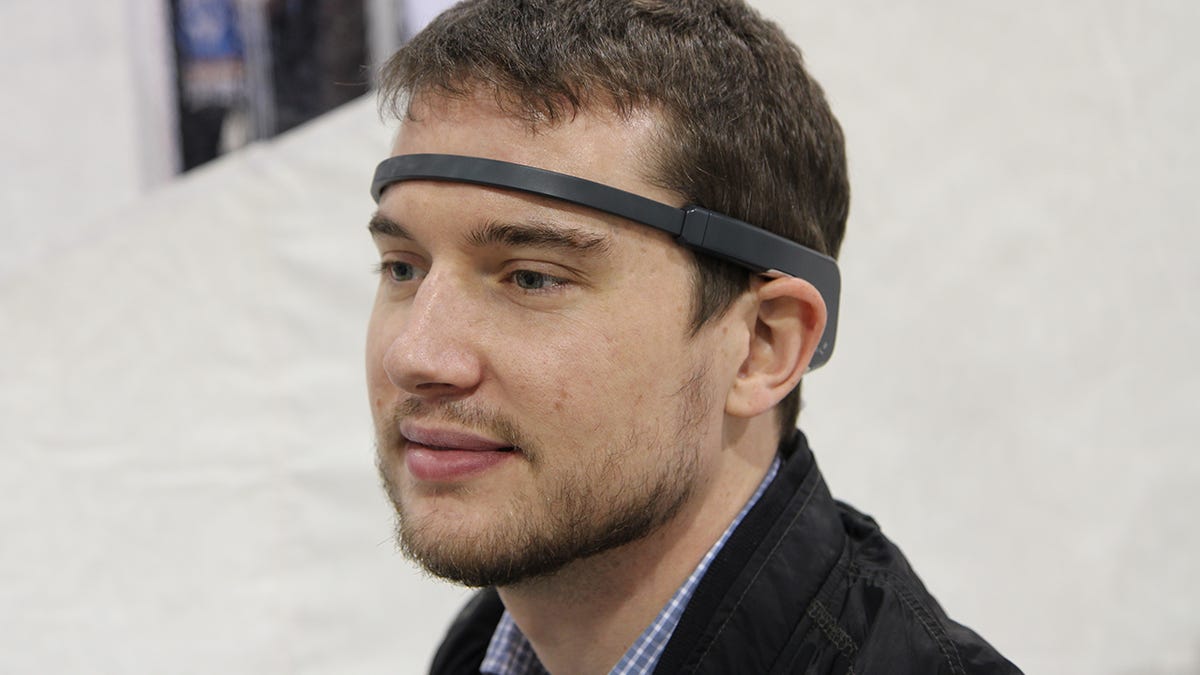Brains-on with Muse, Interaxon's mind control headset
Crave's Christopher MacManus tries a headset that supposedly reads wearers' mind to let them play interactive games or alter their mood.
LAS VEGAS--Some of you may recall that one scene in "Back to the Future II" where Marty McFly travels forward in time to 2015 and plays a shoot-'em-up arcade game. After getting a seemingly great high score, a jaded youth remarks, "You mean you have to use your hands? That's like a baby's toy!"
I couldn't help but remember that quote when I slipped on Interaxon's Muse -- a lightweight headset that turns your mind into an input device by converting your brainwaves into digital signals.
To try the technology out, I stepped into a large inflatable igloo located smack dab in the middle of the southern halls of CES 2013. A cheerful Interaxon employee sat me down in a comfy chair, handed over the Muse, and started rattling off how the company designed the four-sensor brainwave headband to work with brain health, fitness, stress management, and other applications.
We've covered the tech before, so I won't go too in depth on it (you can read more in Interaxon's Muse FAQ).
Basically, sensors in the headset read electrical frequencies emitting from the brain's neurons in a method known as electroencephalography (EEG). This is rather old technology, but Interaxon's take on the tech resulted in a lightweight, non-obtrusive headset that syncs what you think with iOS and Android devices. This stream of consciousness then flows through a Bluetooth connection, opening up several compelling usage possibilities.
During a 10-minute demo, I sampled a collection of brain training and mood-altering games made specifically for Muse. Once my headset properly synched with the iPhone, the first game asked me to make an eclipse by bringing together an image of a sun on the left and a moon on the right side of the screen.
The first attempt didn't go well -- I could barely get the celestial bodies to move. Feeling defeated, I asked the Interaxon representative what went wrong. She said I needed to focus differently by looking at the desired point in the center instead of concentrating on both objects and trying to bring them together. Thinking about the center would alter my focus in a particular way by increasing my beta brainwaves, plus the machine-learning algorithm in the application would adapt and learn my baseline brainwaves and make the eclipse-creating process easier.
Lo and behold, the second time around I focused more at the center of the screen, where I wanted the two stars to appear, and they slowly inched toward that place. It wasn't long before I created an eclipse -- and suddenly became a believer in the mind-reading technology.
The second demo worked more as a mood shifter than a game. Among an array of emotion options, I chose relaxation, as the madness of CES was wreaking havoc on my mind, especially since I had a bad case of the flu.
Calming music started playing in the speakers behind me, and a graph representing two emotional states -- active and relax -- appeared. A voice piped in and guided me through a series of relaxing steps, asking me to focus, and then asking me to relax. I found it amazing how my active graph spiked up, only to fall after receiving instructions to clear my mind. It wasn't long until I reached a state of total relaxation.
Consumers can pick up the Muse at the end of the year for $199, while interested developers can reach out to Interaxon for a SDK now.


